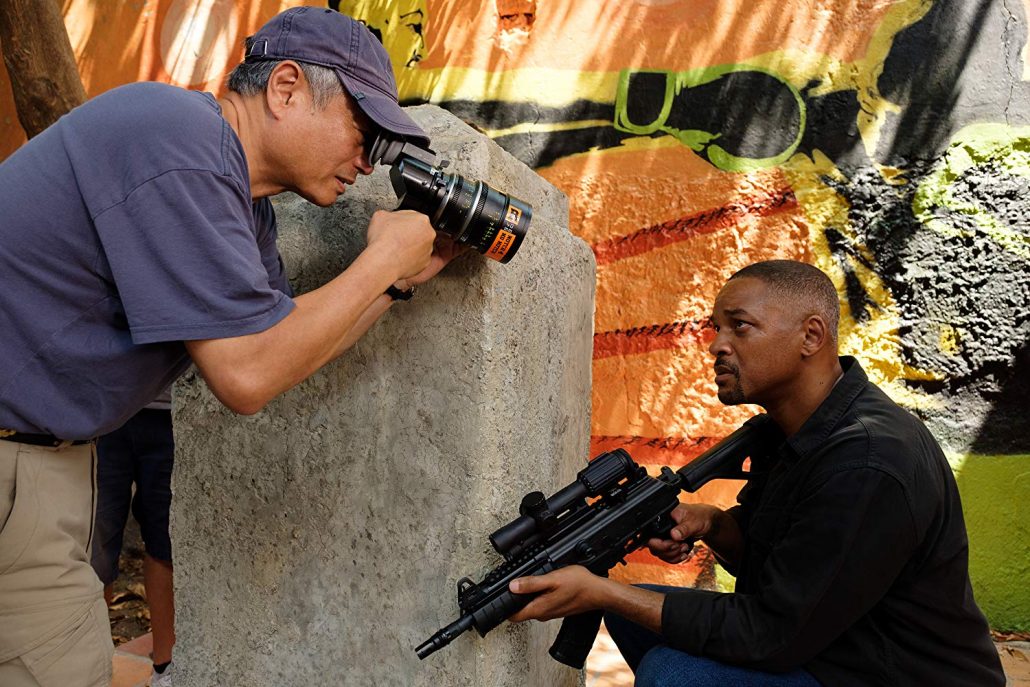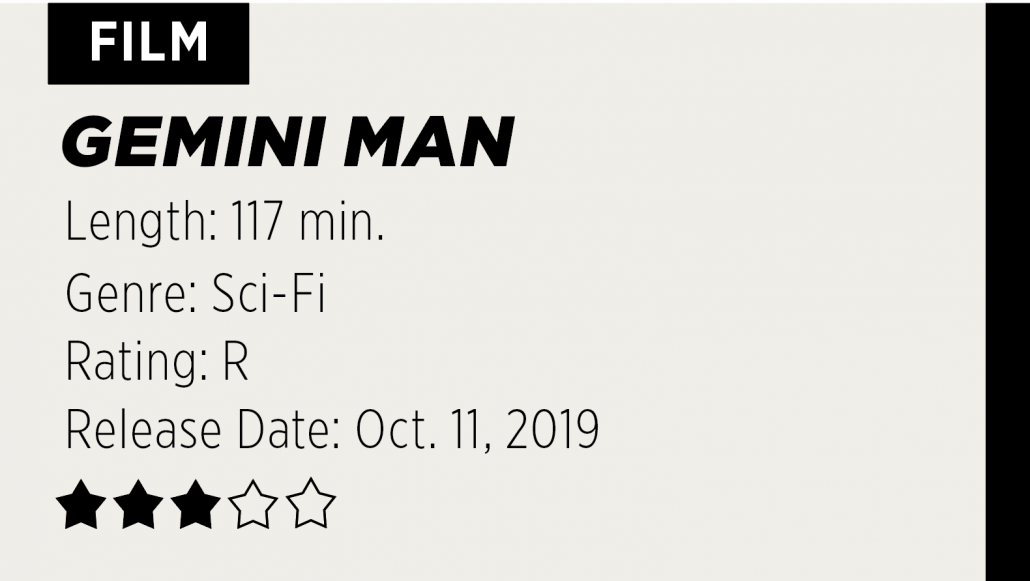REVIEW: ‘Gemini Man’ is all show, no depth

“Gemini Man” has been a long time coming. The original concept, a tale of an aging assassin having to fight his younger self, was sold to Disney in 1997 with the intention of having it out by 1998. Obviously, that didn’t happen. Instead, the film was trapped in development hell for decades. It was rewritten multiple times and featured a revolving door of actors and directors including Harrison Ford, Nicolas Cage, Brad Pitt and Tom Cruise. However, none of them stuck, primarily because the technology to de-age them simply did not exist.
But in early 2017, after toiling in purgatory for so long, Ang Lee came onto the project.
Ever since “Life of Pi,” his critical darling and Oscar smash, Lee has been using the blank check Hollywood wrote him to push cinema to places it’s never been. He started doing that in 2016 with “Billy Lynn’s Long Halftime Walk,” and has now continued it with “Gemini Man,” shooting some scenes in the former in 3D 4K 120 frames per second, and shooting the latter entirely in this new format. To put those numbers in perspective: A standard film that you’ll see in the theater is in 24 fps. Some sports programs aon television are shown in 60 fps, but 120 is unheard of. To make it happen, Lee essentially had to create new cameras and a new way of shooting.
But now, it’s here — “Gemini Man.” Starring Will Smith as aging government assassin Henry Brogan, it details his encounters with a younger version of himself, cloned through Project Gemini, and his unraveling of an entire government conspiracy to create the perfect soldier.
Right off the bat, if you see the film in 120 fps (which I highly recommend), the first thing you’ll notice is how strange it looks. There’s no blur from motion and each scene must be overlit to compensate for the high frame rate, so there’s a certain uncanny valley-ness the viewer must overcome before being immersed in the plot. But once the immersion is there, it’s an interesting experience — the filmmaking recognizes how much the increased frame rate makes it looks like a video game and leans into that, employing many first-person shots.
However, much of the dialogue in the film is atrocious — cheesy and awkward in a very off-putting way. Although the concept is intriguing, much of the dialogue is terrible and the plot is typically globetrotting spy stuff we’ve all seen before. Lee attempts to imbue it with as much thematic depth as he can — examining the relationship between the younger Harry, bred to kill, and the older one who understands the weight of those actions — but he can only do so much.
Smith, however, is charismatic enough to pull most of it off. He plays both of his characters well; the plot is especially reflective as the dichotomy between the younger and older Smith is inherently reminiscent on Smith’s career in the context of his rise to stardom. The de-aging technology is convincing for the most part too and only in scenes in broad daylight become too strange. The surrounding performances, Benedict Wong as Baron the sidekick, and Mary Elizabeth Windstead as Danny Zakarweski, another government operative, are both great as well. Wong in particular brings a lot of needed comedic relief to his role.
Where “Gemini Man” really shines is its action, some of the cleanest in years. It’s reminiscent of something the Wachowskis would do — in one sequence, the younger Harry wields a dirt bike as a weapon against an enemy; in another, the Harrys fight each other in the catacombs underneath Paris. Lee, unlike many modern action directors, lets the camera move and follow characters instead of using fast cuts.
“Gemini Man” creates an incredible viewer experience for film lovers. However, to the average moviegoer, the film may be a bit too out there if they’re simply looking for some action. This new technology is not the future of cinema, as Lee believes it is, but it’s certainly a sight to behold.


